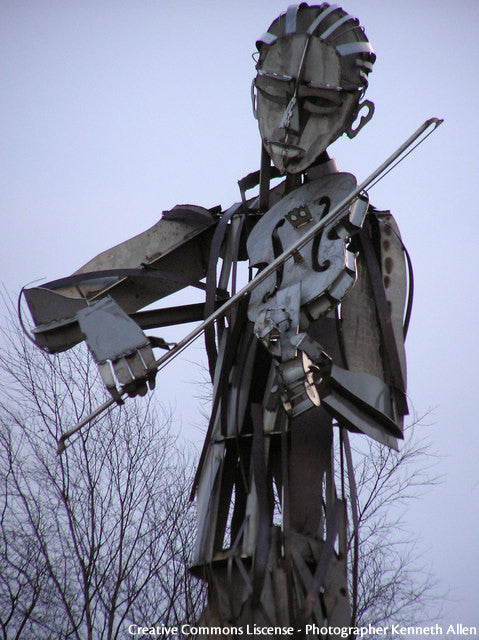Shake off those winter blues - March is here and it’s time to celebrate St. Patrick’s Day and Fiddle Music!

Fiddlers have been working on their trills and ornamentation and are ready to show off their skills at the various festivals and parades around the world.
Kevin Burke from Fiddler Magazine presents some helpful tips for those looking to join in the fun!
"An Irish tune when written is usually kept quite simple, a skeleton version, and it's up to players to "flesh it out" with their own ideas and variations, ornaments etc.
Because the tunes often change from player to player I think the written versions are deliberately kept vague in case being too specific allows them to become"static". The changing nature of the tunes is part of the charm of this kind of music"
Kevin Burke, Fiddler Magazine
Irish Fiddle Ornamentation
Ornaments can be either fingered or bowed; whilst in Scottish fiddling bowed ornament predominates, in Ireland the fingering is more important. Tiny grace notes are very common, and can appear in several different contexts.
1.The Cut - Where two notes of the same pitch lie together in a tune, they will often be interrupted by a single grace note called a cut.
2.The Double Cut - Here two grace notes are used instead of one.
3.The Long Roll - Particularly important in jig playing, this turns three quavers, either separate or slurred, into 5 notes. For example, take a single E note (1st finger, D string), lasting half a bar of 6/8, ie a dotted crotchet. This could be split into five notes; EGEDE or 13101, all slurred together. The five notes can be given equal length, or there may be more stress on the first one. Many players treat the roll more as a rhythmic than a melodic ornament, with the notes played so fast that they are not heard clearly.
4. A Short Roll - is exactly like the long roll, except that the five notes are squeezed into a crotchet instead of a dotted crotchet. In a roll the notes are always slurred together.

5. The Cran - Many Irish fiddle ornaments are direct imitation of pipe ornaments, and this is particularly so with the cran. The pipes are unable to stop the flow of air within a tune, so on a D note, for example the piper has to add non-melody grace notes if he wants to interrupt the note. For a fiddler, the cran is the equivalent of an open string roll. Instead of fingering 01030, which would involve string crossing, he will play 0210.
5. The Slide - Instead of hitting the note squarely, the Irish fiddler will sometimes approach the note from below, starting maybe half a semitone down and sliding swiftly and smoothly up to the correct pitch. The slide is most commonly used at the start of a phrase, and will be applied to just one or two key notes in a tune.



Leave a comment